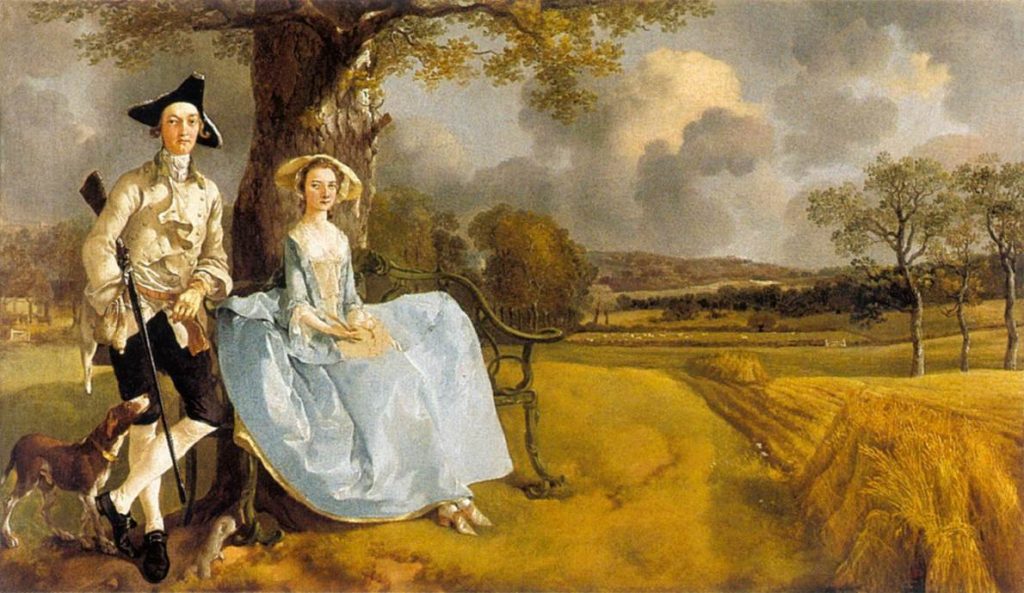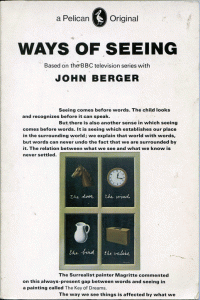Dermot Feenan, Associate Research Fellow, Institute of Advanced Legal Studies, London, reflects on the socio-legal significance of John Berger’s Ways of Seeing, in the wake of the author’s recent death.
John Berger, Ways of Seeing, copyright: Penguin
It is forty-five years since the late John Berger’s Ways of Seeing, the landmark TV series and accompanying book that transformed how many view art. Conceived as a response to Kenneth Clark’s Civilisation, an establishment econonium to high art, Berger enabled audiences to understand that seeing is profoundly shaped by ideology, habit and convention.
Berger’s book is frequently cited approvingly in the legal literature. For instance, over forty journal articles cite the work. Authors include I. Bennet Capers, Eve Darian Smith, Sionadh Douglas-Scott, Angela P. Harris, Naomi Mezey, and Judith Resnik. Ways of Seeing is also cited, as Berger – a provocative Marxist engagé – would probably have enjoyed, alongside associated references in legal studies, such as to Foucault’s Discipline and Punish, Iris Marion Young’s Throwing Like a Girl, and Susan Kappeler’s The Pornography of Representation.
While Ways of Seeing is not beyond criticism (for example, applying a version of Marxism that reduced class to limited categories and glossing nuance for axiom), a number of its key themes have directly informed legal scholarship – of which the following are only indicative.
Gender, representation and subjectivity
Berger examined the representation of women in art, with reference to the (heterosexual) male gaze and its impact, especially, on female subjectivity. ‘Men look at women. Women watch themselves being looked at. This determines not only most relations between men and women but also the relation of women to themselves’, he noted.
Berger also distinguished between the ‘naked’ and the ‘nude’. The latter is always conventionalized. The authority for its conventions derives from the tradition of oil painting in European art. His account helps analyse norms, sources of authority, and signification.
Critique of the law on obscenity[i] draws directly upon his work, with further exploration in criminology of the (heteronormative) male fear of violence in public toilets as symptomatic of a threatening of this conventional ‘male gaze’ – a core ideological feature of gender hierarchy.[ii]
Power, ownership, and class
Berger drew attention to the relationship between capitalism and art. ‘The art of any period tends to serve the ideological interests of the ruling class’, he stated. While the totalisation in this approach and singularity of class interest can be questioned, Berger made penetrating observations about the relationship between power and the image that are amplified in subsequent legal studies.[iii]
Sionadh Douglas-Scott (who references Berger) notes of the Allegory of the Freedom of Trade, painted by a 17th century Netherlands artist, how the figure of trade employs much of the iconography of justice and the rule of law.[iv] This was at a time when the Dutch were, through its Dutch East Indies company, developing capitalism across the globe.
The painting, originally on the ceiling of a wealthy Burgomaster’s house, is now located in the Peace Palace in The Hague: thus identifying international trade not only with justice but also with peace. Douglas-Scott notes that the painting is situated between two panels which feature themes of security. With this image, Douglas-Scott says, capitalism, the freedom of trade, is portrayed as an allegory of the just society, bringing with it security and peace. The image serves also to obscure those aspects capitalism that depend on violence for its institution and maintenance.
Berger analysed Gainsborough’s Mr and Mrs Andrews (circa 1750), inviting consideration of the socio-economic interests that converge in the commission, production, and anticipated reception of an image that encapsulates much from a turning point in English social history: the rise of a new land-owning class, enclosing previously common land, consolidating social capital – and aided by burgeoning law that privileged private property.
 Thomas Gainsborough, Mr and Mrs Andrews (about 1750), copyright: The National Gallery
Thomas Gainsborough, Mr and Mrs Andrews (about 1750), copyright: The National Gallery
The Andrews were, Berger observed, ‘landowners and their proprietary attitude towards what surrounds them is visible in their stance and their expressions.’ It was Berger’s critique of Gainsborough’s painting that led me to request that the image grace the cover of my last edited book Exploring the ‘Socio’ of Socio-Legal Studies, concerned as it was with relations of law, economy and the social.
More than one way to see
Berger was not, of course, the first to critique art in a way which informed socio-legal critique. Foucault’s development in Les Mot et Les Choses [The Order of Things] (1966) of the concept of l’épistémè – the epistemological field within which knowledge and discourse emanates in a particular era – is introduced by his extended analysis of Velasquez’s Las Meninas. The socio-legal literature is peppered with reference to the epistemic, and, occasionally to associated ‘ways of seeing’ – perhaps osmotically referencing Berger.
The language of art criticism to which Berger made a significant contribution has, however, entered the critical legal lexicon; including: representation, framing, surface, and gesture. Tomlins, for instance, applies the explanatory potential of allegory along three further optical dimensions – scope (appearance), scale (perspective), and structure (constellation) – to move beyond the tendency in critical legal history to situate law as object within ‘context’, where context is polity, economy, or society, or more usually a realm of action that is a mixture of all three.[v]
Ways of Seeing informs, in part, a significant trend; the visual turn in legal studies – reflected in a slew of scholarship, for instance: Douzinas and Nead (2009) Law and the Image; Resnik and Curtis (2011) Representing Justice; Goodrich (2014) Legal Emblems and the Art of Law; Goodrich and Hayaert (eds) (2015) Genealogies of Legal Vision; and Giddens (ed) (2015) Graphic Justice.
Berger’s polymath breadth, comprising plays, poetry and illustration, and reflecting a wider concern with how knowledge is produced and reproduced, also informed a broader legal scholarship.[vi] Berger was not tied to a single disciplinary perspective. He challenged convention, inflected with a lifelong concern about the exercise of power and material interests, and those who thereby benefit or suffer.
Regrettably, legal studies too often ignore those interests, instead reifying a continuing fetishism towards case-law and legislation, decorated with worthy platitudes about what ‘society’ wants.
Be sceptical, urged Berger: view differently.
References
[i] Sonya Sceats, ‘The Legal Concept of Obscenity – A Genealogy’ (2002) 16 Austl Feminist LJ 133-47.
[ii] Sarah E. H. Moore and Simon Breeze, ‘Spaces of Male Fear: The Sexual Politics of Being Watched’ (2012) 52 Br J Crim 1172–91.
[iii] Costas Douzinas, ‘The Legality of the Image’ (2000) 63 Mod L Rev 813-30.
[iv] Sionadh Douglas-Scott, Law After Modernity (Hart Publishing 2013).
[v] Christopher Tomlins, ‘After Critical Legal History: Scope, Scale, Structure’ (2012) 8 Annu Rev Law Soc Sci 31–68
[vi] Peter Fitzpatrick, ‘Traditionalism and Traditional Law’ (1984) 28 J Afr L 20-27: opening his study of traditional law or customary law as a creation of the colonial period with reference to Berger’s book Pig Earth to illustrate how representations of knowledge shape the object of the knowledge; and Scott Veitch, ‘“Not in our Name”? On Responsibility and its Disavowal’ (2007) 16(2) Soc & Leg Stud 281–300: citing Berger’s ‘The Pain of Living in the Present World’ < http://mondediplo.com/2003/02/15pain> to illustrate how the categories of responsibility in legal, economic and political terms manage issues of responsibility and disavowal.


Leave A Comment